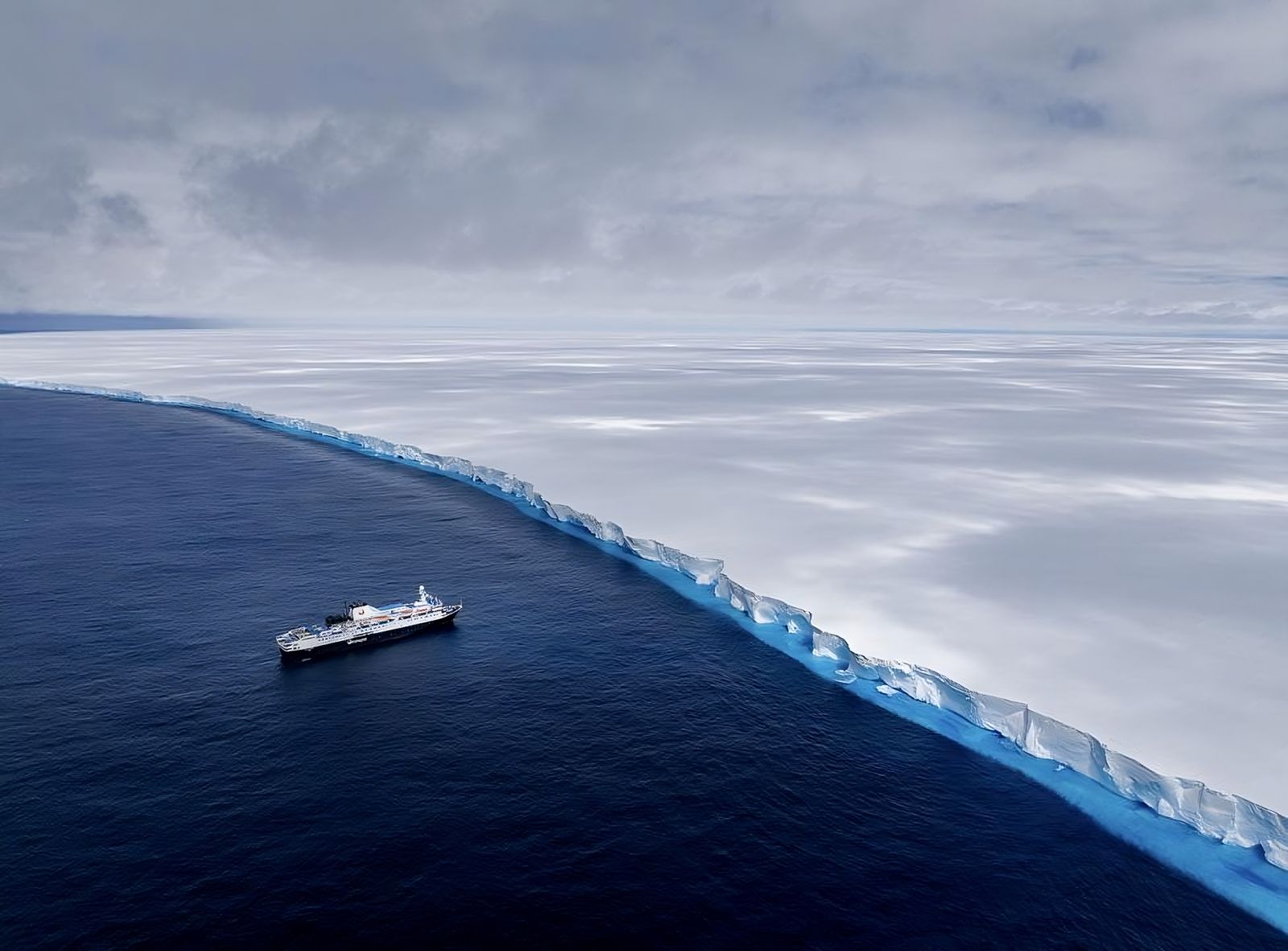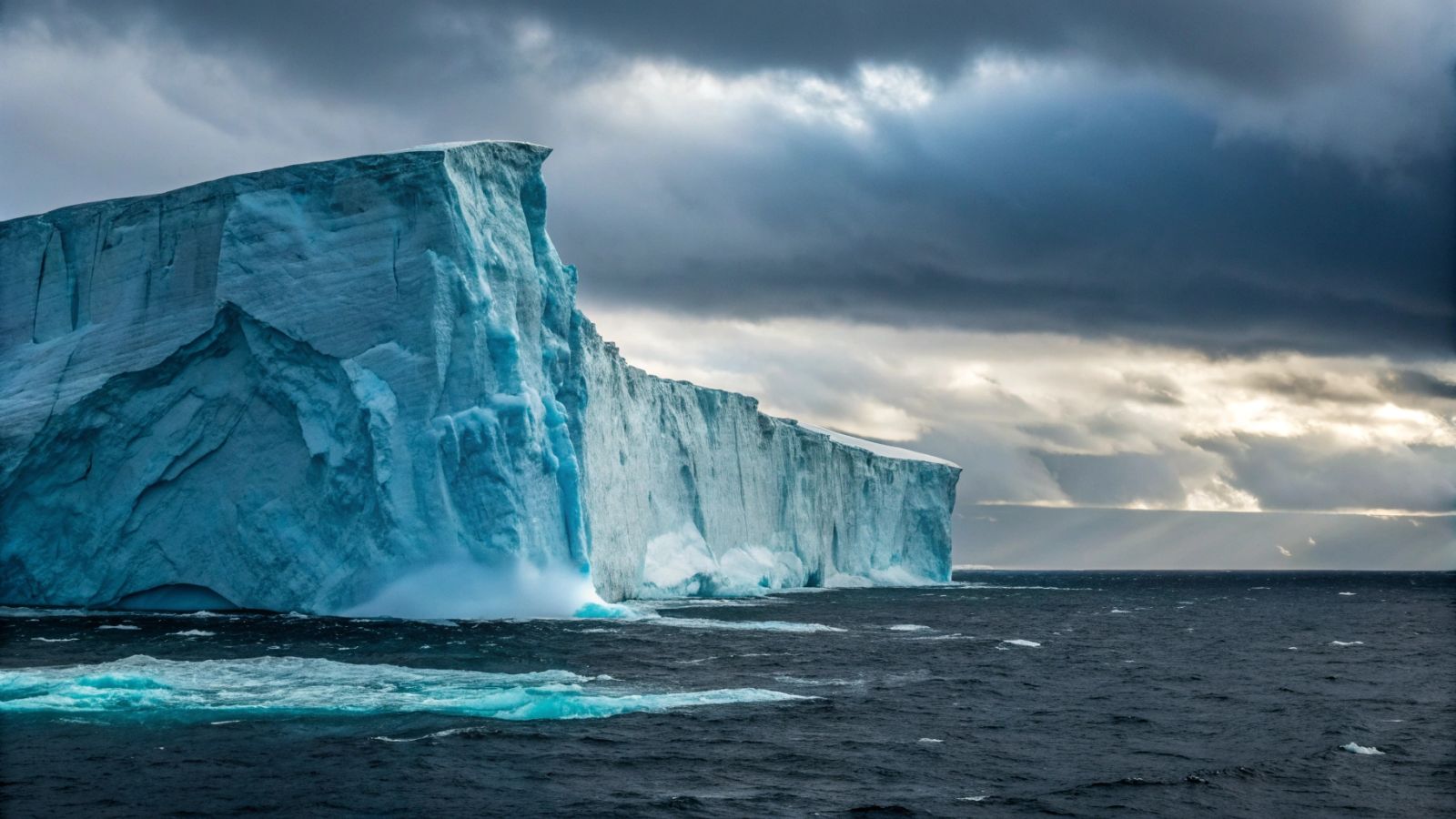Follow us on Google News (click on ☆)
Since breaking off from Antarctica in 1986, this giant iceberg spent decades motionless before resuming its journey in 2020. Today, it is less than 300 kilometers (186 miles) from South Georgia, raising concerns among scientists about the potential consequences for local wildlife.

A moving colossus of ice
With an area of 3,500 km² (1,350 square miles), A23a is a true giant of the seas. Its drift, tracked by satellite, shows it is inexorably heading towards South Georgia. However, ocean currents could still alter its course, offering a glimmer of hope.
Its impressive size and longevity make it a unique object of study for scientists. Unlike other icebergs, A23a shows few signs of fragmentation, making its behavior difficult to predict.
A threat to biodiversity
A collision with the island could block access to the sea for penguins and seals, depriving them of food. A similar scenario occurred in 2004, leading to massive mortality among young animals. Scientists fear a repeat of this tragedy.
South Georgia is home to some of the world's largest colonies of seabirds and marine mammals. A disruption to their habitat would have dramatic consequences for these already fragile species.

A phenomenon amplified by global warming
The formation of giant icebergs like A23a could become more frequent with rising temperatures. These events, although natural, risk having increasing impacts on marine ecosystems and ocean currents.
Global warming is accelerating the melting of polar ice, releasing massive amounts of freshwater into the oceans. This phenomenon could disrupt local ecosystems and alter ocean currents on a large scale.
Persistent uncertainty
Experts remain cautious about the outcome of this drift. The iceberg could run aground on the continental shelf or continue its journey into deeper waters. In the coming weeks, satellite observations will be crucial to anticipate its behavior.
The scientific community is closely monitoring the situation. However, the means to divert such a colossus of ice remain limited, leaving a lingering uncertainty.
To go further: What is an iceberg and how is it formed?
An iceberg is a mass of ice detached from a glacier or ice shelf that floats on the ocean. These ice giants, often imposing, mainly originate from polar regions, such as Antarctica or Greenland. Their formation is a natural process but can be influenced by climate change.

When ice accumulated on a glacier becomes too thick, it eventually breaks off under the effect of gravity and pressure. This phenomenon, called "calving," gives birth to icebergs of varying sizes. Some, like A23a, can reach colossal dimensions, exceeding several thousand square kilometers.
Icebergs are mainly composed of freshwater, originating from snow accumulated over thousands of years. Their submerged base represents about 90% of their total volume, which explains why they float while remaining partially hidden beneath the water's surface. Their drift is influenced by ocean currents and winds.
As they melt, icebergs release freshwater and nutrients into the ocean, which can alter marine ecosystems. They also play a role in the carbon cycle by transporting organic particles trapped in the ice. However, their accelerated melting due to global warming poses major environmental challenges.